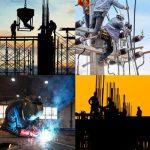One of the most common causes of injury and death on a jobsite or construction site is improper or lack of trench safety. Workers often just don’t understand the dangers of digging in trenches or of working around any type of dig site, which results in cave-ins and falls. While government agencies try hard to educate and regulate workers and business owners, it is still up to the individual to understand what is needed for their own safety and up to business owners and managers to protect their workers as well.
Of course trench safety is a somewhat complicated issue that involves someone manually digging in the trench, someone operating a backhoe or other machinery, and those working around trenches as well. It’s virtually impossible to warn people of all the dangers of this type of job site, but some simple tips will help to avoid many potential problems.
Understand the Dirt
One problem with trench safety is that workers often assume they’re perfectly safe. Instead, assume the worst! Remember that when you excavate and pile dirt or soil around a trench, this isn’t like a block of cement that isn’t going to go anywhere. Assume that it could crumble around the trench, which is a very possible threat. This is even more true as you pile more dirt on, making it heavier and therefore more likely to crumble.
When working outside a trench, assume that the ground you’re working on could crumble under you unless it’s properly and securely braced. Don’t assume that you’re on solid ground just because you don’t feel it giving way underneath you. Remember that things like vibrations from a backhoe can cause the dirt to loosen and crumble under your feet, even if it seems secure. Always try to understand the worst about the dirt and soil on which you’re working, and this will add to your trench safety.
Remember the Basics About Trench Safety
Sometimes the most basic points are the ones that will save a person’s life or keep them from injury. For instance, is there a ladder or other quick means of exiting a trench in case it begins to cave in? Are braces added as the excavation weight becomes heavier?
Consider too the shape of an excavation and how this adds or takes away from trench safety. A sloping back wall means less pressure on the excavation which means less of a chance of it caving in. Very tall trenches mean that there is more pressure on the walls of the excavation, which can contribute to a cave-in as well.
These things may seem very basic but they’re very important when it comes to trench safety. Often just remembering the simple things and taking a few minutes to put precautions in place are all that’s needed to keep workers safe and yes, even alive. Remembering these simple things and being sure to adhere to them on every jobsite can mean the difference between a safe jobsite or a dangerous one.





